5 Underrated Corys You’ll Want to Keep Next
Cory catfish are one of the most common fish in the trade. They’re cute, peaceful bottom dwellers that love groups and generally stay on the smaller side. There are a number of popular species, but there are dozens more that are not as well known and are just as interesting and adorable. Here I’ll talk briefly about 5 species of the subfamily Corydoradinae that I wish were more popular!
Please note these are NOT care guides, just brief introductions to some fascinating species. Make sure to do thorough research on the care needs of these fish before taking any home.
5. Corydoras bethanae (CW006)
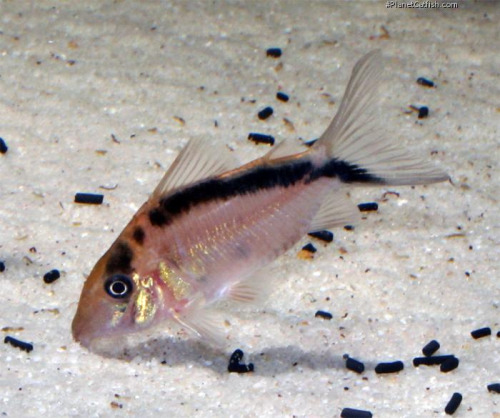
I love the big swooping black stripe on CW006. This species is found in the Blanco and Ucayali river basins in Peru. The paper initially describing the species measured specimens ranging from 43.7-57.5mm SL, or approximately 1.2-2.3 inches, making this a pretty small fish! They are similar in appearance to both Corydoras aurcatus and Corydoras granti, so go ahead and check those species out if you love the bold arc stripe on C. bethanae but are struggling to find them for sale. While I could not find water parameter information for sites confirmed to contain this species, localities near the area they have been found contain soft, acidic water with sand substrate.
4. Aspidoras spilotus (C125)
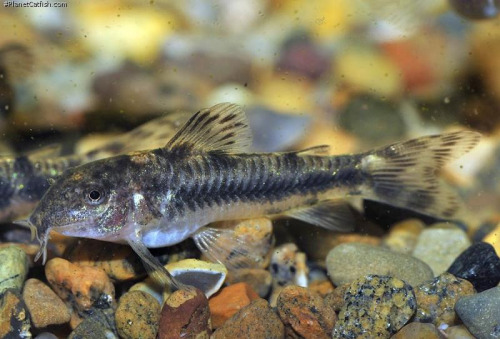
Image credit: Johnny Jensen’s Photographic Library
That’s right, not everything in the subfamily Corydoradinae is in the genus Corydoras! The genus Aspidoras contains several underrated species of catfish that have not enjoyed the popularity of their cousins. This species has some lovely patterning and seems to be the most common Aspidoras in the trade. The type locality is from Riacho dos Macacos a tributary of River Acaráu in Brazil. They reach roughly 1.8 inches in length and like their water a bit on the acidic side of neutral.
3. Corydoras ortegai (CW031)

Image credit: Johnny Jensen’s Photographic Library
Who can resist these little corydoras with their skeleton-like patterning and black mask? From the paper first describing them, the holotype and paratypes measured between 0.85-1.28 inches (25.9-32.7mm), making them about as petite as pygmy corys (Corydoras pygmaeus) though in my opinion they have a much more attractive coloration. Their type locality is Río Putumayo basin in Peru, which contains muddy colored water and a soft clay and sand bottom. I could not find information on temperature and other water parameters, but they were found sympatric with Corydoras pastazensis which is a potential gateway to parameter information. Additionally this paper discusses various habitats of fish in Peru and may have good information on habitat and parameters as well.
2. Scleromystax barbatus (No C or CW number)
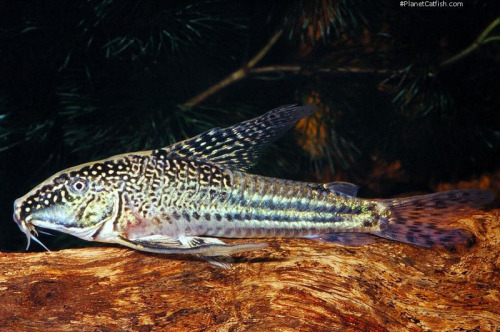
In addition to Corydoras and Aspidoras, there’s also genus Scleromystax! This species is the easiest of the genus to find for sale n the hobby. I love the gorgeous, almost hieroglyphic patterning on these guys. They’re on the larger side at nearly 4 inches so perfect for someone who doesn’t want a tiny catfish. Their type locality is Fazenda da Japuhyba near Angra dos Reis in Brazil. They like an acidic to almost neutral pH and do best between 68-76°F.
1. Corydoras sp (CW010) (Gold laser cory)
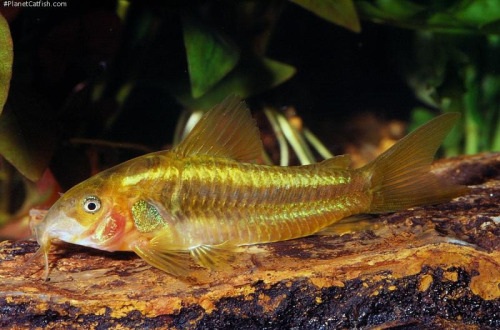
These are probably one of my absolute favorite Corydoras of all time, with their stunning golden coloration and bright sheen. It’s not very visible in this specimen, but they have a bright orange stripe along the top of their body. They are native to Peru. Despite this being one of the more popular listed species, I couldn’t find much information on their wild habitat, likely due to this species not yet having been officially described.
Bonus: Corydoras sp. (CW069)
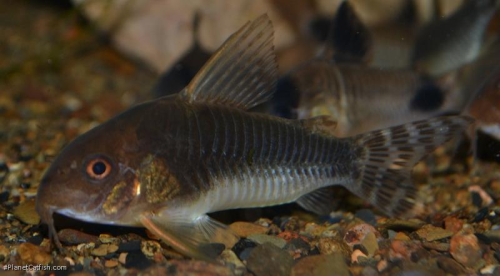
I hesitated to include this species because they have few keepers listed on Planet Catfish and I was unable to find anyone selling them, but they are so gorgeous I couldn’t help myself. Eric Bodrock on Planet Catfish notes that this species is quite similar to Corydoras gossei, and suspects many “C. gossei” in the trade are mislabeled CW069. I was able to find several people who have or had fish labeled as C. gossei for sale so that is something to look into if you are as captivated by this beautiful species as I am! I could not find much information on their habitat but as they were said to be imported with C. gossei, they may inhabit waters nearby. The C. gossei type locality is Near Guajará Mirim in the Mamoré River basin in Brazil.
Which species from this list is your favorite? Which species in the family Corydoradinae do you wish had been included? Let me know!
 spriteofmushrooms liked this
spriteofmushrooms liked this shadowthorne reblogged this from justnoodlefishthings
0riyocooki3 liked this
rotiferwhispers reblogged this from bufomancer
 the-distantprince liked this
the-distantprince liked this sameteeth reblogged this from bufomancer
sameteeth liked this
vees-clues liked this
 tw0can reblogged this from betta-butch
tw0can reblogged this from betta-butch enbygnome liked this
deliciouslyfuzzytree liked this
 basils-garden reblogged this from bufomancer
basils-garden reblogged this from bufomancer  strangelightspyweasel liked this
strangelightspyweasel liked this  undedmosinchains liked this
undedmosinchains liked this  alternative-dreamscape reblogged this from betta-butch
alternative-dreamscape reblogged this from betta-butch  alternative-dreamscape liked this
alternative-dreamscape liked this  petersillie liked this
petersillie liked this octane liked this
1714shark4171 reblogged this from waterskies
 waterskies liked this
waterskies liked this  waterskies reblogged this from bufomancer
waterskies reblogged this from bufomancer  swampstone liked this
swampstone liked this incalyscent liked this
fleshdyke reblogged this from betta-butch
fleshdyke liked this
itsplasma liked this
 betta-butch reblogged this from bufomancer
betta-butch reblogged this from bufomancer musings-of-a-manic reblogged this from justnoodlefishthings
musings-of-a-manic liked this
 missingblackcornsnek reblogged this from bufomancer
missingblackcornsnek reblogged this from bufomancer  plutosmallshrilings liked this
plutosmallshrilings liked this sour--gummy--worm liked this
 neoncryptid169 liked this
neoncryptid169 liked this tauntedoctopuses liked this
 94pigeons liked this
94pigeons liked this  majormouette reblogged this from strawberry-crocodile
majormouette reblogged this from strawberry-crocodile  majormouette liked this
majormouette liked this megafauna-deluxe liked this
 leporisaurus-rex reblogged this from bufomancer
leporisaurus-rex reblogged this from bufomancer  subduction-induction liked this
subduction-induction liked this naturalkillercell reblogged this from justnoodlefishthings
bunchofanon liked this
dryeraseslime reblogged this from justnoodlefishthings
sa-kae liked this
ambystonatechniality reblogged this from justnoodlefishthings
ambystonatechniality liked this
nu-disco liked this
strawberry-crocodile reblogged this from justnoodlefishthings
 bufomancer posted this
bufomancer posted this - Show more notes
